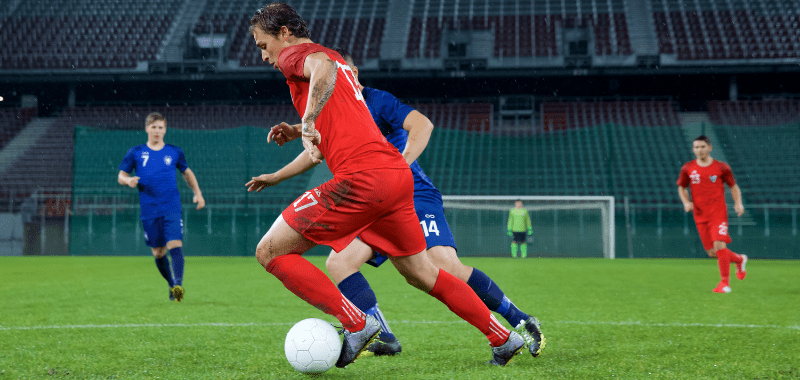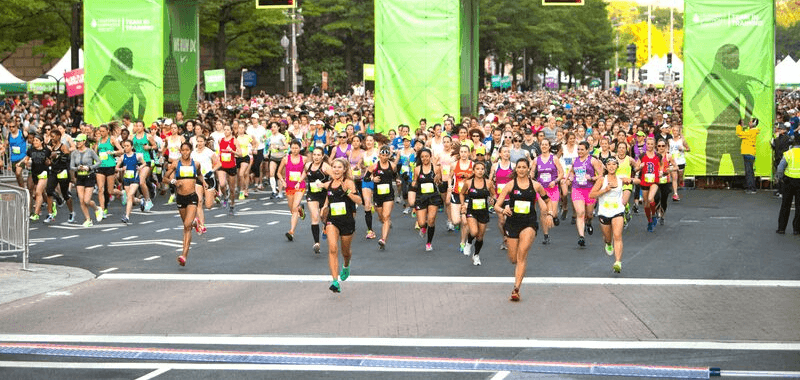Tabla de contenido
Many readers ask how many kilometers a soccer player runs per game.
Although the distance covered by a soccer player depends on variants such as his position on the field or the intensity of the match, they usually run between 8 and 12 kilometers per game. However, this was not always the case.
How has it changed how much a player runs on the field?
As a reference, Pelé participated in the 1958 World Cup in Sweden. A player of his characteristics ran about 4 kilometers in each match; in the Mexico 1970 edition, the displacement barely increased to 5.5 kilometers, while for the following two World Cups, Germany ’74 and Argentina ’78, the legs of a striker covered 6 to 8 kilometers. As we can see, things have changed drastically.
Thus, the distance covered by first-division players increased from 3 to 5 kilometers in the sixties to between 10 and 12 kilometers in the seventies and eighties.
Understanding that a soccer player does not run the 90 minutes that each match lasts, we must segment his performance into 18% running, 72% walking, another 7% sprinting or explosive starts, and the remaining 3% running in possession of the ball or dribbling the opponent. This is known thanks to statistics provided by UEFA since 2008.
Regarding the speed they run at, studies quantifying the physical effort of the soccer player in competition found the following: Players only run at top speed for 12 percent of the game, equivalent to 11 minutes. But that period is run faster than a 400-meter sprinter. For 44 minutes the player jogs and for the remaining 35 minutes the player’s movement is slow, almost walking.
José Luis Serrano, who was the doctor for the Mexican national soccer team for more than a decade, explains that today’s soccer player is prepared to run a large part of the game, demanding the maximum, and is also ready to know the effects of their diet and the need for adequate rest to perform efficiently. If you think it would be easy, you can explore soccer scholarships in the USA with University Soccer.

How does a soccer player recover?
Recovery care is quite similar to that applied to elite runners. Implementing neuromuscular bandages to reduce inflammation in injured regions, massages, stretching, and physiotherapies get you back on the field within a few days, ready to continue training.
“The professional soccer player is very demanding; he plays too many games. If it weren’t for the evolution of science and its integration into sports, soccer would have remained stagnant,” said Dr. Serrano, a doctor for the Mexican national team.
Vicente “El Diablo” Pereda, Toluca’s historic striker, Pan-American, and Olympic champion said: “We were not as well cared for, as well prepared, and as well trained as today’s soccer players. Of course, there are always irresponsible sportsmen, but in the past, there was less knowledge about the correct maintenance of the body.”
Antonio Sinha, a Mexican World Cup player in Germany in 2006, affirms that “The qualities of a soccer player must be many, but if you have to choose one, I would say it is speed. Today, if you don’t run, you don’t play,” while Dr. Serrano has another opinion: “Strength. The gym is fundamental for any team that thinks like a champion. It was after France ’98 when the mentality changed. You need strength to withstand the blows and the rhythm of the match.”
Brazil’s Pelé played his best soccer at 30, the Dutchman Johan Cruyff at 28, while Maradona and Zidane did it at 26. Of the current stars, Lionel Messi has achieved it at the age of 22. Currently, the best age to make the most of soccer is from 18 to 25 years old, and the fact that soccer is a faster, younger, and more dynamic sport is primarily thanks to science, which has advanced over time and has taken on the task of helping athletes to be better every day.
Other interesting facts
How fast does a footballer run?
A soccer player runs at about 25 km per hour during sprints. (It must be considered that a soccer player’s sprint is a punctual action in which a few tens of meters are usually covered (20 – 30 meters per sprint).
Of the average 11 kilometers covered, 1.8 kilometers are covered, running at about 5 meters per second.
They walk a total of 3.2 kilometers, for which they spend 18’14”.
In jogging mode, they run about 4 kilometers and spend 14’69”.
They run about 1.2 kilometers in running mode, for which they spend 2’36”.
In sprint mode, they run 1.8 kilometers for a time of 2’67”.
How does this compare to other athletes?
We compare the 25 kilometers per hour of a soccer player, who starts punctually throughout a match, with that of other sprinters.
Footballer (per match). Runs 11 kilometers per game at 25 km/hour for 4 minutes.
World record for 100 meters. 36 km/hour for 10 seconds.
800 meters world record. 28 km/hour for 1 minute and 3/4.
World record for 1,500 meters. 25 km/hour for 3 minutes and a half.
World record for 5,000 meters. 23 km/hour for 13 minutes.
Marathon World Record. 20 km/hour for 2 hours and 10 minutes.
SOURCES: www.vidatraining.com, www.noticiadesalud.blogspot.com, www.informador.com.mx
Looking for a plan that trains with you, not against you?
At running.COACH, we don’t just build a schedule. We create a smart, living plan that evolves with you. It understands your level, your race goals and your real life. Whether you sync your GPS watch or train straight from our iOS or Android app, your plan adjusts automatically as you improve.
From day one, you’ll feel the difference:
- A fully personalized, dynamic plan designed for you.
- Automatic sync and effortless workout tracking.
- Real-time updates when life happens, including missed sessions, new races or schedule changes.
- Simple, science-backed guidance to train smarter and recover faster.
🎁 Start today and enjoy your first 30 days free.
Because the best training plan isn’t one you follow. It’s one that follows you.app.











0 Comments